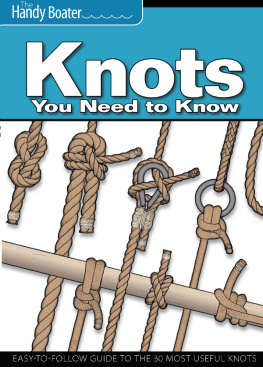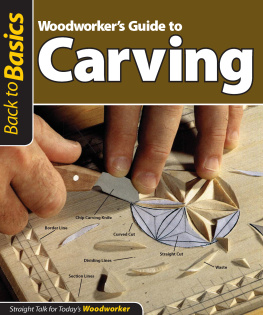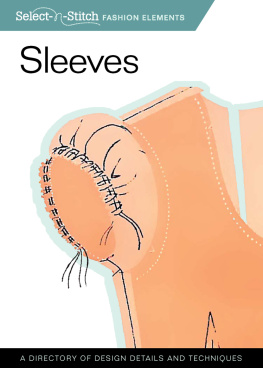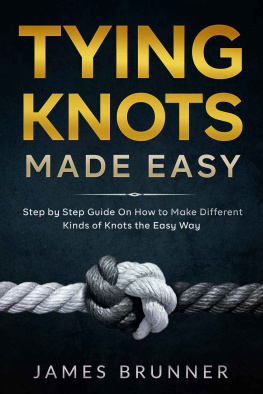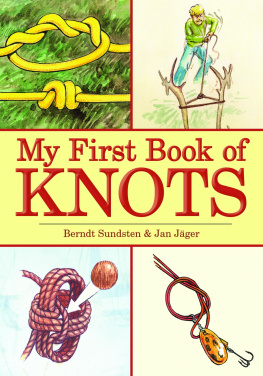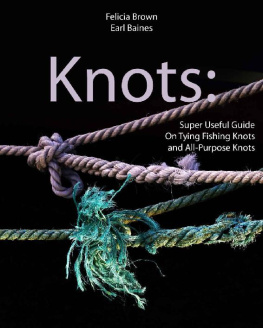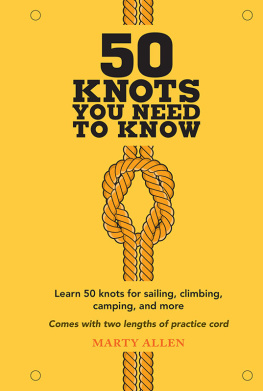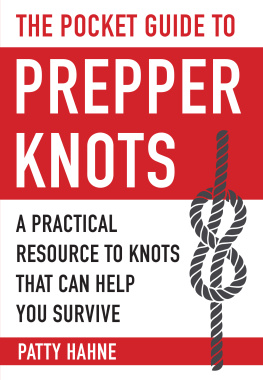Table of Contents
Guide

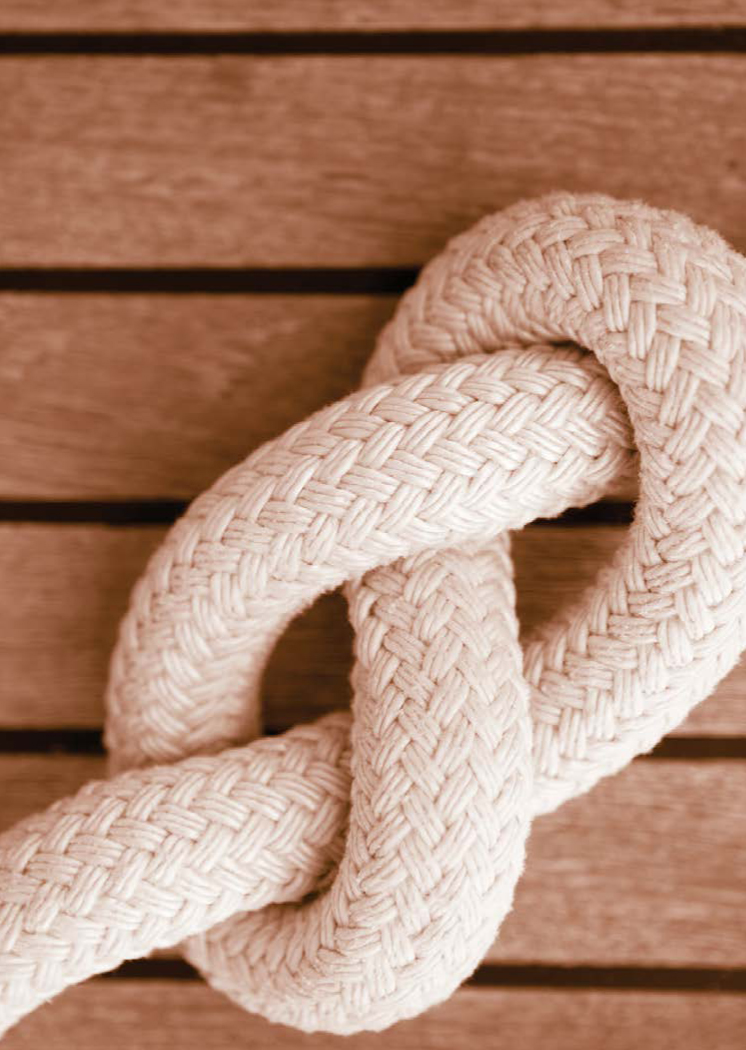

Contents

WHAT YOU WILL LEARN
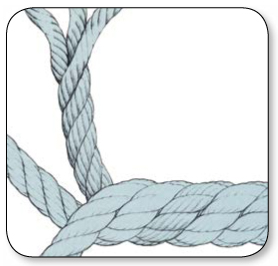
| Chapter 1
Knowing the Ropes, Choosing the appropriate rope for the job is just as important as choosing the knot to tie it with. |
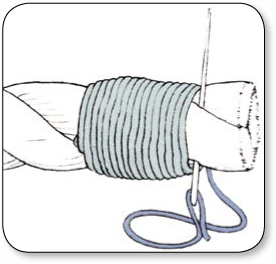
| Chapter 2
Tight Finishes, Whether whipping or seizing, finishing off a rope end will keep it from unraveling. |
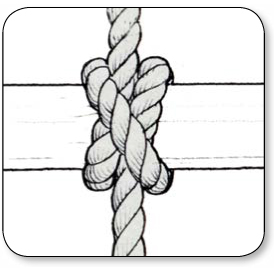
| Chapter 3
The Knots to Know, In choosing the right knot to use, the boater should be guided by the purpose needed. |

| Chapter 4
Tying to Lines and Rings, Boaters need to know how to secure lines to other lines and to rings. |

| Chapter 5
Splicing, The best way to make a permanent loop in a line is to make an eye splice. |
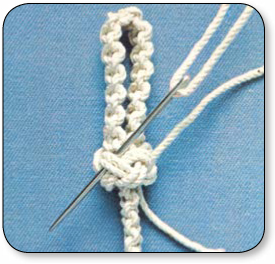
| Chapter 6
Additional Uses, A solid knowledge of knots will allow a boater to make ladders and lanyards as well. |
INTRODUCTION
Ropework: Plain and Fancy
Beyond the 10 or so basic knots, splices, bends, and hitches that every boatman must know, there are an almost infinite number of additional rope forms, decorative and utilitarian, which can be mastered to improve both the beauty and function of his vessel. The multiple half hitches being bent onto a steering wheel, for example, appear to be designed just for decoration; actually, they serve the eminently practical function of giving the skipper a firm grip on the helm. The Portuguese bowline was designed long ago for straightforward utility, yet like all of the other ropework shown on subsequent pages, it has a handsome and seamanly look to it (). In addition to the useful and aesthetic virtues of these knots, the tying of them is itself a satisfying pastime, a kind of maritime sculpture that quickly takes form under the hands and eyes of the boatman. That is one reason why sailors since ancient times have occupied themselves with this practice; the crews of sailing ships used to while away the long sea voyages by trying to outdo one another in knotsmanship.
All these knots have a long history. In fact, some have outlived their initial purpose and survive today in an entirely new guise. The tack knot (), for instance, was once used on windjammers to secure the tack, or forward edge, of a sail. Today, though, metal fittings have taken over the function of securing the tack; but the tack knot is still being tiedusually as a decorative fillip for the end of a bell rope or grab line. One old seamans yarn tells of an English tar named Matthew Walker who was condemned to death, then offered a pardon on condition that he tie a knot that the judgehimself a former seamanwould not be able to undo. The sailor disappeared into his cell with 10 fathoms of rope and devised, exactly in the middle of the line, the deceptive knot that today bears his name. He then reemerged to present his invention to the judge. The judge was stumped, and Matthew Walker received his pardon as promised.

This story conveys a number of enduring truths about knots. One is that in the sailors world, a knot exists for every conceivable purposeincluding saving the life of a condemned man. Another is that the vast majority of knots in the nautical spectrum, though they may at first appear incomprehensible even to a fairly well educated eye, are easy and relatively quick to tie once the boater learns how. The knot that confounded the judge, for example, can be fashioned within about two minutesthough nowadays it is generally made near the end of a line rather than in the middleby anyone who knows the trick (), are tied with the end of the line remaining intact.
Different kinds of rope have special qualities that suit them to certain kinds of knots. The easiest material to use is cotton; it can be manipulated comfortablywithout chafing fingertips or splitting nails, which prickly manila has a tendency to doand it serves well for knife lanyards and ditty bags. However, cotton is neither strong nor durable and should never be used for working lines. For heavy-duty apparatus, such as sheets, halyards, anchor lines, or a water-ski rig, modern synthetics such as nylon and Dacron are best; they neither shrink nor rot after having been soaked in water. And for good, workaday versatility, many boatmen feel that nothing beats manila; it makes a sturdy knot whose sculptural outlines clearly show, and has an old-fashioned look that warms the hearts of tradition-minded seamen.
CHAPTER 1:
Knowing the Ropes
Rope is the seamans most essential tool. It tethers every vessel to a dock or mooring, or secures it to an anchor. For the man in a sailboat, ropes are, in addition, the reins that harness the wind in his sails.
The flexibility and strength of rope are astonishing. It can be made into knots, bends and splices; it coils neatly for stowing; and yet an ordinary manila rope thinner than a mans little finger can carry a load of hundreds of pounds.
The reason for the pliancy and holding power of rope lies in its construction. The basic structural element in virtually all rope is a collection of threadlike fibers that are twisted together into thicker components called yarns. These yarns, in turn, are twisted into strands; and the strands are either laid up (i.e., twisted once again) or else braided together, as shown on , to form the finished rope.
In the past, rope fibers were made from natural materials such as bark, grasses, or leavesand some still are. Hemp, manila, cotton, and linen rope still find favor on many modern boats. However, all natural fibers tend to rot, and most boatmen have turned to longer-lived synthetics such as nylon and Dacron.

